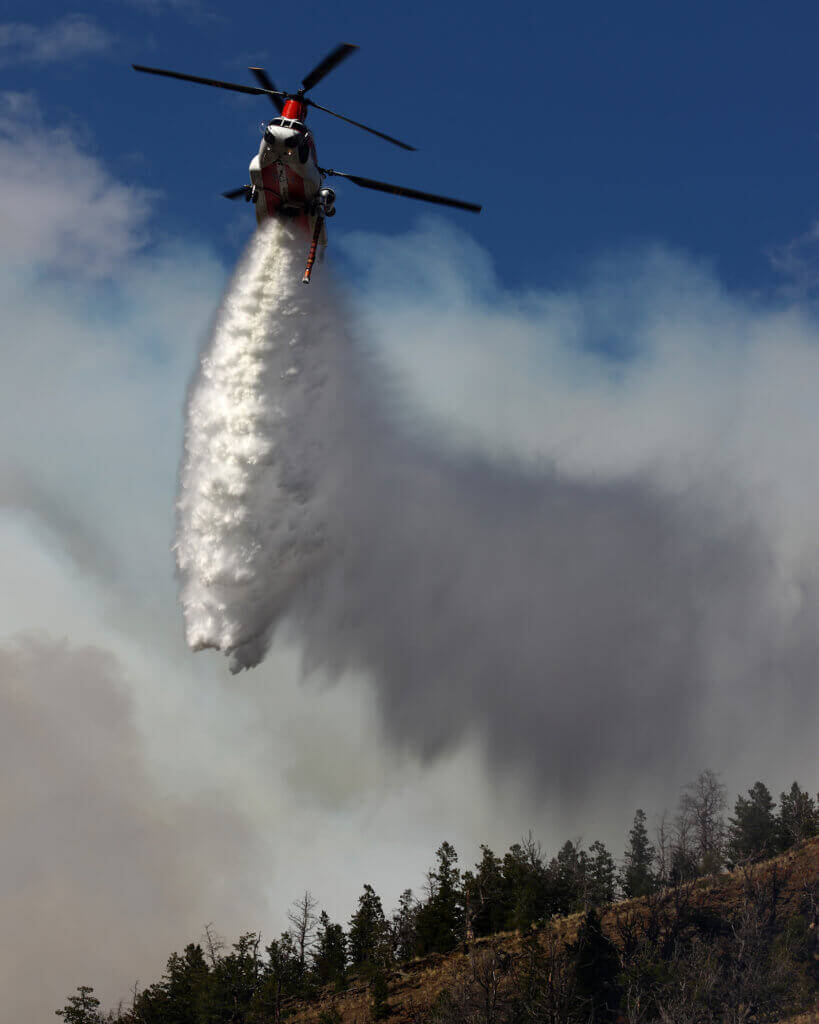As the most destructive wildfire season in the western U.S. in years shows no sign of let-up, the aerial firefighting industry is pulling all available resources to keep aircraft flying and crews mission-ready.

“The duration and intensity of this year’s fire season is what makes it highly unusual,” said Dan Snyder, chief operating officer of air tanker operator Neptune Aviation Services in Missoula, Montana.
Of the company’s nine tanker-converted BAe 146 jets, eight are currently contracted to the U.S. Forest Service (USFS) – four operating under exclusive use, and four under call-when-needed contracts. Three tankers, in fact, are working on the hugely devastating Carr fire near Redding, California, as well as on multiple fires within the state, which has been especially hard-hit this year with some 17 major fires in progress.
The additional contracted fleet, Snyder noted, has been deployed to fires in Washington, Idaho, Nevada, and Colorado. He added that crew fatigue has become a factor for pilots and maintenance crews, which Neptune was well prepared to address.
“July got busy and stayed busy, and we know that August and September will be very busy, as well. Fortunately, we planned to have enough reserve crews on hand to rotate both pilots and maintenance crews, in and out, as they start to fatigue,” he said.
Josh Beckham, general manager of Helimax Aviation, noted that pilot workload is the biggest issue the Sacramento-based company is addressing at this time. “Our pilots are now maxing out on their flight duty limitations — 42 hours during the course of six consecutive days — as specified by the USFS contracts,” he reported. “This season, so far, we’ve sent in relief pilots three times — just within the last two weeks. It has been at least a few years since we’ve had to do that at this rate. Usually, it’s one to two times per season — not three times in two weeks.”
Currently, four of Helimax Aviation’s six CH-47D Chinook helicopters are in action, including two in Oregon and one in Idaho since July 1. Another was just released from the Fergusson Fire, which at one point closed Yosemite National Park.
All of the additional flying, Beckham added, has also impacted maintenance support. “We’ve had to send additional crews into the field to relieve mechanics, all across our fleet this season,” he said.
The season’s ongoing early- to mid-summer fire activity is more typical of what takes place during the August/September time frame, according to Robin Rogers, vice president at Rogers Helicopters in Fresno, California.
“Because of this, we are dealing with a lot of flight hours in a short period of time,” he said. “In fact, since so much flying is being done, we’ve had to bring in a relief crew earlier than we normally would. While we’ve done this only once within the past two weeks, I anticipate that we’ll have to deploy another within the next few days.”
To ensure that all aircraft are flight-ready, the company has also brought in additional maintenance crews to help in the field. “They are mostly focused on airframe and powerplant inspections on those aircraft flying an average of seven hours per day,” he said.
Rogers added that a considerable number of helicopters in his Bell 212 fleet are working throughout California. Two have been on the Fergusson fire, and two on the Mendocino Complex fires, which includes the River and Ranch fires near Ukiah and Santa Rosa. Another is currently in Chico standing by for initial attack. Its two fixed-wing turbine commanders, which function in an air traffic coordinating role, are also at work, with one on the Fergusson fire, and the other on the Lions fire in the Sierra National Forest.
Keith Saylor, director of commercial operations at Columbia Helicopters, reported that the operator has been dispatching supplemental crews for pilot relief, as needed.
“The supplemental crews rotate throughout the bases where the helicopters are operated, and relieve the pilots for a day,” he explained. “Under USFS rules, if a pilot goes beyond 36 hours within any six day period, that pilot must take a day off. The relief crews enable the pilots to take that day off, and reset their duty times.”
Currently, the Portland, Oregon-headquartered company has two CH-47Ds modified with internal tanks operating in Libby, Montana, and Rifle, Colorado, along with two Columbia Model 234s outfitted with Bambi buckets — one in Clear Lake, California, and the other at Merlin, Oregon.
To date, Saylor said, the company has not had any issues involving unscheduled field maintenance. “I attribute this to the fact that we stay ahead of any anticipated problems during the helicopter’s normal maintenance period,” he said. If there is a maintenance event, we will bring in a mechanic to fix the problem as soon as possible — to the best of our ability.”
“The privately operated aerial firefighting industry has been well prepared for long fire seasons, and to provide its services thanks to years of planning and investment,” said George Hill, executive director of the American Helicopter Services and Aerial Firefighting Association (AHSAFA), the Washington-based industry trade group. “As longer, more destructive fire seasons become the new normal, the industry will continue to be proactive with greater efficiencies in aircraft and personnel utilization going forward.”
Columbia Helicopters, Helimax Aviation, Neptune Aviation Services, and Rogers Helicopters are members of AHSAFA, which represents the privately operated aerial firefighting industry in Washington.









